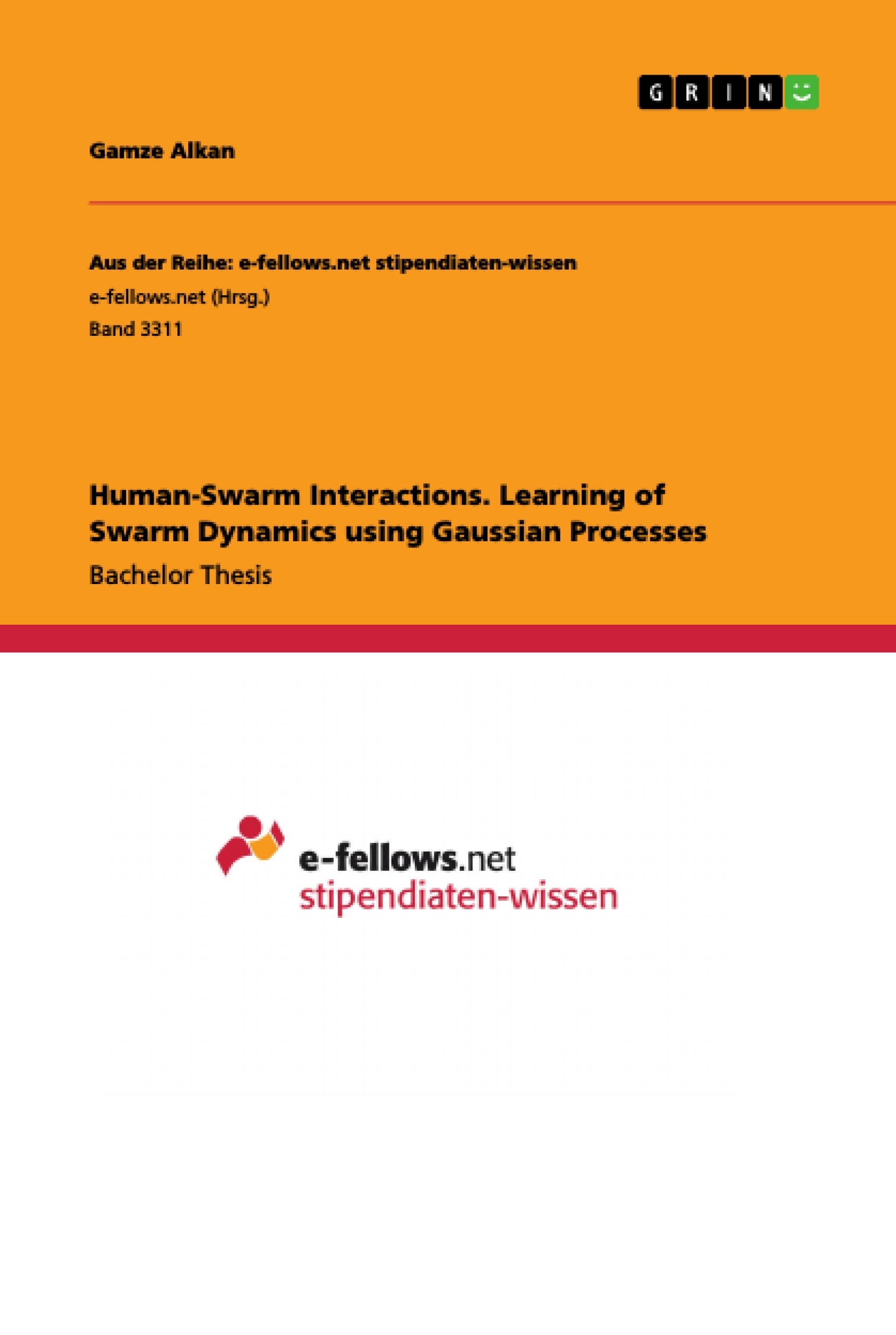Inspired by the natural flocking behavior of animals, scientists try to achieve similar advantages by using swarm robots to fulfill more complex tasks in an easier and more cost-efficient way. In order to understand the behavior of such a dynamic system and make predictions for future states, a sufficiently accurate model is necessary.
However, the dynamics of the system such as the communication structure of the semi-autonomous multi-agent system in this thesis are sometimes unknown to the human. Thus, machine learning methods such as Gaussian Process Regression are applied in order to learn the system model. The influence of the collected training data on the accuracy of the learned model is analyzed for a linear and a nonlinear case of the system. Afterwards, the model is used to predict the future average positions in order to support the human operator to control the agents to a desired destination.
In the setup regarded in this work, the human can control the velocity of a subset of robots, while all agents are supposed to move gathered by exchanging information such as their position within the neighbors. Finally, the system behavior is learned through training data collected in an experiment and analyzed in a simulation.
Inhaltsverzeichnis (Table of Contents)
- Introduction
- Human-Swarm Interactions
- Gaussian Process Regression
- State of the Art
- Swarm Dynamics
- Graph Theory
- Swarm Dynamics and Consensus
- System Analysis
- Learning of Swarm Dynamics using Gaussian Process Regression
- Basics of Gaussian Process Regression
- Gaussian Process Regression for a Linear Multi-Agent System
- Gaussian Process Regression for a Nonlinear Multi-Agent System
- Prediction of the Future Position and Application
- Experimental Verification
- Summary and Outlook
- Summary
- Outlook
Zielsetzung und Themenschwerpunkte (Objectives and Key Themes)
This thesis aims to explore the application of Gaussian Process Regression (GPR) for learning the dynamics of a swarm robot system. The goal is to develop a model capable of predicting future states of the swarm, enabling human operators to control the agents towards a desired destination.
- Modeling swarm dynamics using GPR
- Influence of training data on model accuracy
- Prediction of future swarm positions
- Human-swarm interaction and control
- Experimental verification of the learned model
Zusammenfassung der Kapitel (Chapter Summaries)
- Introduction: This chapter introduces the concept of human-swarm interaction, highlighting the need for accurate models to predict swarm behavior. It also provides background information on Gaussian Process Regression and discusses relevant research in the field.
- Swarm Dynamics: This chapter delves into the fundamental concepts of swarm dynamics, including graph theory, consensus algorithms, and system analysis. It lays the groundwork for understanding the complexities of multi-agent systems.
- Learning of Swarm Dynamics using Gaussian Process Regression: This chapter focuses on the application of GPR for learning swarm dynamics. It discusses the basics of GPR, its implementation for both linear and nonlinear systems, and the use of the learned model for predicting future positions.
Schlüsselwörter (Keywords)
The key keywords and focus topics of this thesis include swarm robotics, Gaussian process regression, machine learning, human-swarm interaction, multi-agent systems, system dynamics, and consensus algorithms.
- Citation du texte
- Gamze Alkan (Auteur), 2017, Human-Swarm Interactions. Learning of Swarm Dynamics using Gaussian Processes, Munich, GRIN Verlag, https://www.grin.com/document/511613



